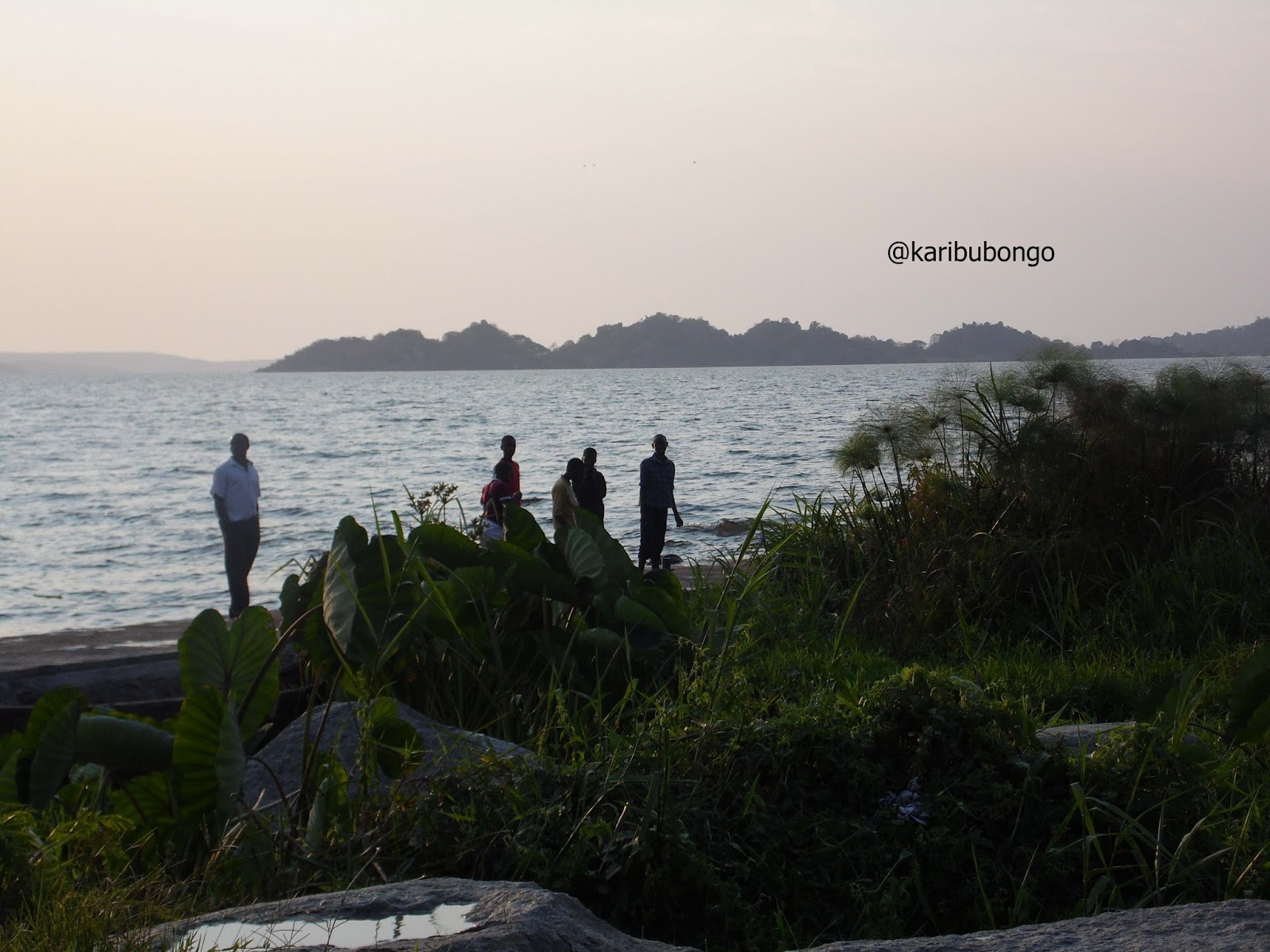Selous Game Reserve is named after the late Captain
Frederick Selous (1851 – 1917) who died in the reserved and buried in it at
Beho Beho. He was a professional hunter who managed to shoot a number of
animals, especial the dangerous ones such as 31 lions, more than 200 buffalos
and elephants. If I were to narrate the story it will take a decade (I
exaggerate that, but it will surely take long time). In this case I would
recommend a guide book by Olli Marttila “The Great Savanna” The national parks of Tanzania and other key
conservation areas. There is a great story about Selous Game Reserve and
others.
.JPG) |
| The welcome comedy |
Having said so let see what Selous has to offer. First af
all it is one of the largest conservation areas in the in the world covering
50000km2. The environment is both striking and diverse, a mass of labyrinthine
watercourse framed by spectacular borassus palms and ever – changing thickets
and miombo savanna. Here roams the mightiest population of elephants in East
Africa and the biggest population of buffalo to be seen anywhere on the African
continent, and the reserve is also the world’s most significant stronghold for
highly endangered wild dog. At the same time Selous is one of the last refuges
of the browse, or black rhino.
.JPG) |
| Pick you style! |
My current three weeks expedition in the reserve left me in
awe; I mean it took my breath away despite the fatigue induced by constant
classes we took in the wilderness as students. I learnt the techniques of
hunting, preparation of trophies “skinning”, making of biltong and guarding at
night to keep hyenas away from the biltong. Quite amusing!
.jpg) |
| Drying biltong. |
1. Photographic
Tourism
The Northern part of the reserve is dedicated to
photographic tourism know as tourist blocks. This goes as far as from Mtemere
gate to Matambwe gate. Plenty of animals are seen here from greater kudu to the
lesser you name them.
 |
| National Symbol of Tanzania "a giraffe". |
2. Hunting
From the late Frederick Selous to myself and possibly you,
there is a good quality quota offered here. All it takes is a license or a
permit to hunt in the designated hunting blocks. There a number of hunting operators
in the country who will facilitate you to your moment of life changing
experience. Although I was in a group of students but it was a magical moment
experience. Do you have some guts? “I dare you”. Remember hunting exercise is
meant to utilize wildlife sustainably and not the other way round.
.JPG) |
| Am your professional hunter to be! |
3. Camping
It was my first time camping in a large group but still my
adrenaline wouldn’t leave me from anxiousness
and little bit of fear. Especially on the first few days, am sure you
won’t ask me why on this, will you? Anyway there are lot of camp sites in the
reserve to mention a few; Hippos camp, Butembo camp and many others.
.JPG) |
| Game meat barbecue at the camp site. (Linda & Me) |
4. Mode of
transportation
This is out of ordinary in most cases, especially in
Tanzania conservation area. Not only that but some travelers don’t take much
notice on the transportation mode they chose for their destination. Well I do
and what I find cool here is the variety. In 2008 I came to the reserve by “chemin
de fer” (French) meaning the train, and this time by vehicle, other option
includes aircraft. And if only Rufiji River had no hippos and crocs I would definitely
consider a boat ride.
.jpg) |
| Am your pilot to be. Inspired by Suzan Mashibe. |
5. Walking safari
I had my share when conducting transect walk for animal
counting exercise and it surely proved to me that nothing beats the calmness
and enchanting wilderness. I encourage you to do this and you can plan it with
a tour operator of your choice, simply satisfying.
 |
| Walking the transect. |
6. Community services
I know it sounds awkward but impacting positive effect into
someone’s life is totally glamorous. It sure is, most especially when it leads
to a win - win kind of situation. Poaching is serious and conservation is still
mysterious, trying to be helpful by educating the community adjacent to the
reserve could reduce the effects. I know there are lodges out there encourage
visitors to donate for their outreach programs, but I think it is high time
that we should consider community service as tourism activity as well. Setting
down and participating in some activities that the local community do is very
amusing as you learn new ways of life at the same time impacting knowledge.
.JPG) |
| Community work by the humanitarian ME with the bucket and other students! |
My next safari this weekend is to Tarangire and Manyara National
parks stay tune for the sensational report coming afterwards. Thank you and good
luck.
Read More


















.JPG)
.JPG)
.jpg)

.JPG)
.JPG)
.jpg)

.JPG)



































